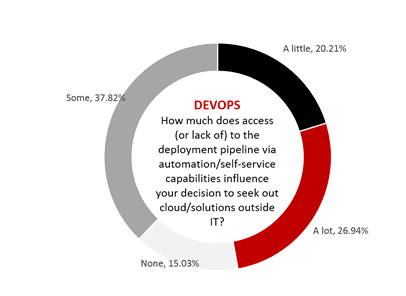オープンソーススポットライト: F5 インフラストラクチャ アズ コードとマルチクラウド管理性
マルチクラウドの理念のもとで、管理性が重要なテーマとなっていることにお気づきかもしれません。 これは、アプリをスケーリング、保護、およびユーザーに配信するタスクには、ロードバランサー、コンピューティング、ストレージ、アプリのセキュリティなど、一連のサービスが必要になるためです。 クラウドはこれらのサービスのプロビジョニングプロセスを大幅に容易にする可能性がありますが (実際にそうなります)、運用には悪影響を及ぼします。 残念なことに、複雑さはどこか別の場所に移ってしまいます。
あなたがそれらのサービスをプロビジョニングするのであれば、それはまったく問題ありません。 しかし、サービスを設定、調整、管理しなければならない場合、それはあまり良いことではありません。
複雑になると管理が難しくなるからです。 2 つのクラウドはどれも同じではありません (API とサービスに関して)。これは多くの場合、ユーザーが対処しなければならない 2 つの完全に異なる運用モデルを意味します。
したがって、管理性はマルチクラウドを成功させる上で重要な要素となります。

組織がこれを実現する方法の 1 つは、展開を簡素化する構造を採用することです。 これらは、次のような何らかのテンプレートの形式をとることが多くなっています。 OpenStack HEAT、AWS Cloud Formation、Azure ARM などが思い浮かびます。 これらのテンプレートは、BIG-IP の真の価値であるサービスを実現するために実施する必要がある特定の構成に関して、BIG-IP 展開の大部分を体系化します。
テンプレートは、インフラストラクチャ・アズ・コード (IAC) の最も優れた例の 1 つです。 これは、コード成果物とまったく同じように扱うことができるためです。 バージョン管理、ブランチ化、マージ、取得、クローン化、そして最終的にはデプロイが可能です。
このモデルは、API とスクリプト言語を介したクラウドと管理の DevOps 指向のビューとよく一致します。 結局のところ、DevOps の影響力を NetOps にまで広げることができ、その結果、IAC アプローチを使用してサービスを迅速に展開することができれば、誰もが満足することになります。 NetOps からのそのようなサービスの欠如が、クラウドに関して IT を回避する DevOps の決定に大きな影響を与えることを考慮すると、これはまさに適切な処置です。
マルチクラウドの管理性をサポートすることは、まさに私たち(現在の私たち)が OpenStack、AWS、Azure のテンプレートの開発を開始したときに思い描いていたことです。 IAC アプローチを有効にして俊敏性とスピードを向上させるため、これらのテンプレートは github を通じて無料で入手できます。
なぜなら、私たちのラボのデプロイメントはあなたのデプロイメントではなく、また、(あなたの後ろの列であなたの肩越しに読んでいる)他の人のデプロイメントでもないからです。 デプロイメントは共通の特性セットを共有しますが、すべてのアプリには、同じ商品化されたサービス構成では満たすことができない特定のニーズがあります。 ラウンドロビン負荷分散は、ステートレスなマイクロサービス ベースのアプリには十分かもしれませんが、他のapplicationアーキテクチャ、特にクラウド環境では、非常に非効率的 (コストがかかるのは言うまでもありません) になる可能性があります。 アプリのパフォーマンスを適応および最適化し、データのセキュリティとユーザー操作の安全性を確保する自由が必要です。
IAC を含む NetOps アプローチのメリットを享受し、可能な限り多くのクラウド環境に可能な限り多くのサービス ベースを展開できるようにするには、これらの成果物を独自のリポジトリにプル、クローン、コミットできる必要があります。
したがって、1 日に 3 回でも四半期に 3 回でも、スケジュールに従ってプル、クローン、コミット、デプロイを実行できます。 オープンソースなので、いつでもアクセスできます。
